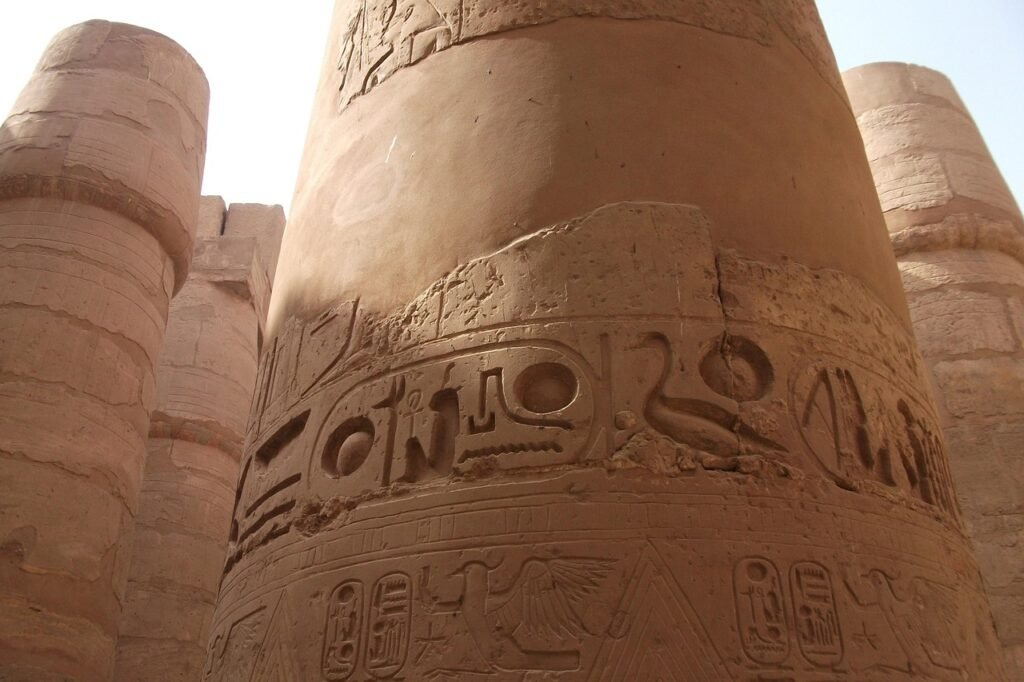Summary
- The Djed pillar, associated with the gods Ptah and Osiris, represents stability and immutability in ancient Egyptian culture.
- Originating from the myth of Osiris, the Djed symbolizes stability and the afterlife, depicted as a pillar with horizontal bars.
- Prominent in Egypt’s history, the Djed was celebrated in the Heb Sed festival and featured in temples and the Book of the Dead.
- The Djed pillar underscores the Egyptians’ beliefs in divine influence and the concept of eternal life.
One of the most famous ancient Egyptian symbols was the Djed pillar, which was a symbol of stability, permanence, and immutability. It was found everywhere in Egyptian art and architecture throughout the country’s history. The symbol was associated with Ptah, the God of creation, and Osiris, the Ruler of the underworld. Actually, it represents the god Osiris’s backbone.
The symbol has appeared throughout Egypt’s history very vividly and regularly as it reminded the public that death is a portal to a new beginning, the nature of life itself, and that the gods are always near.
Djed Pillar Meaning
The symbol appears as a pillar or a vertical shaft with four horizontal bars near the top and a series of lines between each bar. There are four bands around the neck of the shaft under the first of the horizontal bars. The Djed pillar represents the concept, the spoken & written word of stability. The origin of the symbol can be traced to the myth of Osiris, which involved his brother Seth, the god of disorder, chaos, desert, and violence, attempting to kill his brother Osiris by tricking Osiris into climbing into a coffin and then throwing into the Nile River which ended up on the shores of Byblos where a sacred tree grew rapidly around the coffin.
The king of the land was impressed by the huge tree and ordered it to be cut into a pillar and put in his palace without what was inside of it; his goddess Isis was able to get the pillar to remove Osiris’s body and reconstruct the pillar which became known as the Djed Pillar. The creator god Ptah was often seen with the Djed and even called the noble Djed. The Djed pillar represents the human backbone of Osiris, which encourages the soul to rise up from the body and move towards the afterlife and the enduring presence of the gods in one’s life.
Purpose of the Djed Pillar
The djed-pillar was a very important and essential key symbol in ancient Egyptian hieroglyphs, and the overall culture represents stability and endurance, which had many different purposes within the society of ancient Egyptians. It is associated with Ptah, the creator god, and Osiris, the god of the afterlife. Egyptians believed it to be the backbone of Osiris, thus ensuring his ability to function after resurrection.
Spell 151e of the Book of the Dead calls it “The Magical Protection of Osiris” which ensures the well-being of the deceased. It was placed as an amulet near the spine of mummified bodies, which symbolized eternal life, and spell 155 was recited over it during burial rituals. The ceremony of “Raising the Djed” was also part of the Sed festival, which symbolizes renewal and the perpetuation of life beyond death.
Djed Pillar History
During the predynastic era, there was a fertility pole, and Osiris started as a fertility god before becoming the ruler of the underworld. There used to be a festival called Heb Sed, “The Djed Pillar” Festival, which celebrated the first day of the harvest season through the rising of the pillar in the sky by the cult of Osiris, which symbolizes the grains rising from the earth like how Osiris Returned from the dead.
The pillar of Djed was viewed as the pillar that held the skies. In Egypt old kingdom (2613-2181 BC) the Djed was featured on many temples and illustrated in the Book of the Dead in various versions and even came in the shape of an amulet. One of the most notable examples of the Djed is shown in the temple complex of the step pyramid of Djoser at Saqqara.









